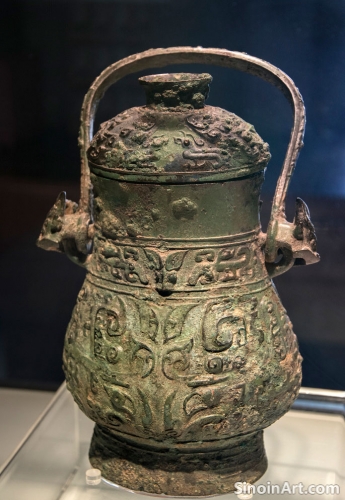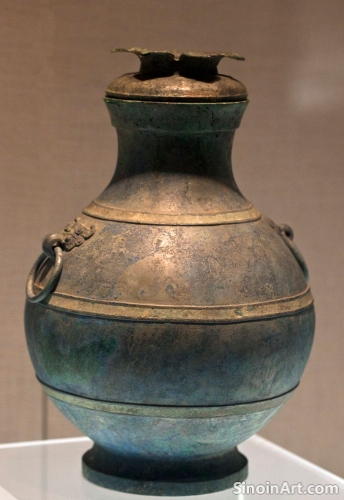The Symbolic Use of Bronze in Ancient Chinese Tombs: Expressing Status and Power in the Afterlife
|
The inclusion of bronze objects in ancient Chinese tombs was far more than a simple act of burial; it was a powerful expression of the deceased's social status, wealth, and power, designed to ensure their continued well-being and recognition in the afterlife. The types and quantity of objects that were included in burials often directly corresponded to the status of the person who was being buried, and also to the beliefs of the culture to which they belonged. The bronze objects were carefully selected to create an ongoing representation of the deceased and their position in both life and also beyond death.  Bronze ritual vessels, weapons, and musical instruments were commonly placed in tombs, each reflecting the deceased's status, their interests, and their expected role in the spirit world. The presence of specific items in a tomb helps us to better understand the specific beliefs of both the individual and also their culture. These objects were carefully selected to emphasize the importance of the deceased and to help to ensure their wellbeing in the afterlife.  The careful arrangement of bronze objects within tombs also played a symbolic role, with the design and layout of the burial chamber also reflecting the social status and religious beliefs of the deceased. The placement of specific items in the tomb was often designed to help guide the soul and also to provide them with protection and power. The layout of the burial space was often used to help articulate a particular understanding of the afterlife.  The inscriptions on bronze objects found in tombs often recorded the lineage, accomplishments, and titles of the deceased, highlighting their connections to both their family and to their place in society. The use of inscriptions helped to both remember and to codify the legacy of the departed. The study of bronze ware in funerary contexts helps to reveal the complex interplay of beliefs, social hierarchies, and the desire to express wealth and power, even after death. The care and planning that went into the creation of burial sites and the inclusion of bronze objects is a powerful testament to the beliefs and values of the people of that time. |
Tag : bronze tomb symbols, Chinese afterlife, burial status, funerary power, grave artifacts
Related information
- The Preservation of Bronze Artifacts: Understanding the Chemistry of Corrosion and Deterioration
- Bronze Mirrors and Ancient Chinese Beliefs About the Soul: Reflection and Transformation
- Bronze Ware and Ancient Chinese Communication Systems: Signals, Markers, and the Transmission of Information
- The Role of Animal Motifs in Chinese Bronze Ware: Symbolic Creatures of Power and Mystery
- Bronze Ware and the Development of Ancient Chinese Music Theory: The Role of Tuned Instruments
This article explores the chemistry of bronze corrosion and deterioration, highlighting the scientific principles behind conservation efforts, and the methods and techniques used to stabilize and preserve these artifacts for future generations.
This article explores the connection between bronze mirrors and ancient Chinese beliefs about the soul, highlighting their role as guides in the afterlife, their association with spiritual transformation, and the belief that they could capture and preserve the soul's essence.
This article explores the use of bronze in ancient Chinese communication systems, highlighting its role in creating signaling devices, markers, and other tools for transmitting messages, ensuring that both visual and auditory forms of communication were implemented across large distances.
This article explores the animal motifs found on Chinese bronze ware, highlighting the symbolism of creatures like the taotie, dragons, phoenixes, and tigers, revealing their use in conveying power, spirituality, and connections to the natural world.
This article explores the influence of bronze ware on the development of ancient Chinese music theory, highlighting the role of tuned instruments, especially bianzhong bells, and their impact on scales, harmonies, and the understanding of musical structure.